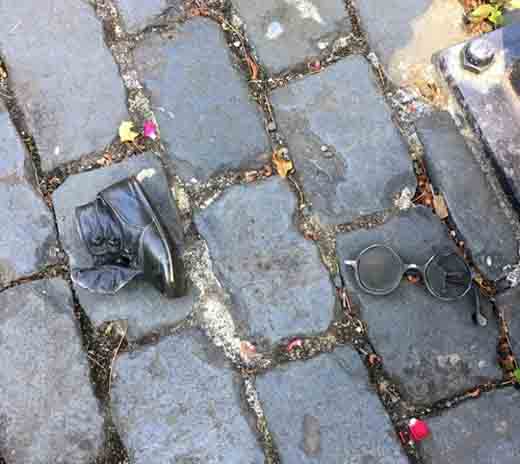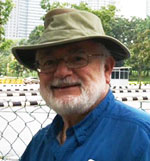
(c) Oliver Pollak

PORTLAND, Oregon — In the Summer of 2017 we took a 5,500-mile road trip. Richmond, California to Vancouver. The California and Oregon coasts were beautiful. Fish and chips galore. Right turn to the Trans-Canada Highway to a wedding in Winnipeg. Right turn to Omaha, Nebraska. Right turn and back to California.
We stayed two days in Camas, Washington, atop Spud mountain, looking at Mt Hood and Mt. Jefferson and Columbia River with friends from our Omaha years, Karen, Dan, and their odd dog, Penny Between 1980 and 2010 their employment took them to Chicago, Kansas City, Omaha and Fresno. Now they are back home in their beloved Pacific Northwest. I reveled photographing hummingbirds, sometimes eight at a time.
We ate at Portland’s famed food stalls, three different ethnic dishes for four people. We went to the sprawling Powell’s Books, America’s largest independent bookstore. Had a coffee in their café and schmoozed with people of a certain age. People, books, readership, awesome Camas is six miles across the Columbia River to Oregon where we overcame our fear and maintained our balance as we rode Segways along the Columbia River walk.
We visited Washington Park, drove by the Zoo, Japanese Garden, Veterans Memorial, searching for backup lights indicating a parking place opening up. The parking fairy was with us, we got out of the car at Portland’s pride, the International Test Rose Garden. The roses were abloom with color and a sweet plum and tobacco fragrance.
Sports fans, especially football and baseball, practice a form of architectural tourism, they visit those bucket list, sometimes hallowed stadiums, that on any given Sunday hold 100,000 people in rapture. Perhaps they purchase a logoized coffee cup, t shirt or pennant. My predilection leans toward visiting bookstores, museums, and public art spaces including Holocaust memorials.
Oregon has a diverse population; Native Americans, European and Asian immigrants, and about 40,000 Jews. Adjacent to Washington Park, we followed the signs to the Oregon Holocaust Memorial. Amidst towering firs, cedars, pines, rhododendrons, filled with the forest aromas we reflected.
The monument, conceived in 1994 and completed in 2004 has three components. The walkway to the memorial starts with facsimiles of 1930s street lamps. The stone path is strewn with bronze artifacts, symbols of disrupted faith and flight, a menorah, refugee suitcase, violin, teddy bear, book, shoe, glasses, and a doll. Childhood, culture, reminiscent of the Washington DC’s Holocaust Museum treatment of the victim’s property as artifact that sucks the air out of your lungs.
Portland added a buried container of ashes from people killed at Chelmo, Treblinka, Sobibor, Belzen, Mojdanek and Auschwitz-Birkenau.
But the upright statutes tell another story. They proclaim in marble, granite, brick, mortar, bronze with English and Hebrew text, that extirpation of a vital people, despite unprecedented levels of vicious hatred and state of the art technological violence, is impossible, so long as the remnant remembers, and continues the narrative.
Approaching the memorial’s concave wall there is a brief description of the camps carved into marble. Artfully designed bronze plaques contain fifteen short statements about the horror of the camps. On the back of the memorial are twelve-foot-high marble tablets which record the names of lucky survivors who made Oregon their home followed by names of less fortunate family members who died in the camps. The closest Holocaust Memorial to Portland is in Vancouver, 315 miles distant.
Cultural and gender sensitivities are swirling, heads and monuments are full. Adjacent to the Holocaust Memorial was a statue, “Coming of the White Men,” dedicated in 1946.
We have turned from uncritically hailing questionable deeds to mindfully understanding our perplexed past. The Winnipeg wedding took place in the wondrous soaring Canadian Museum of Human Rights, designed by Albuquerque, New Mexico architect Antoine Predock. Located at The Forks where the Assiniboine and Red Rivers meet it opened in 2008 funded in great part by Israel Harold Asper and the Asper Foundation.
*
Pollak, emeritus professor of history of the University of Nebraska at Omaha, is a freelance writer based in Richmond, California.